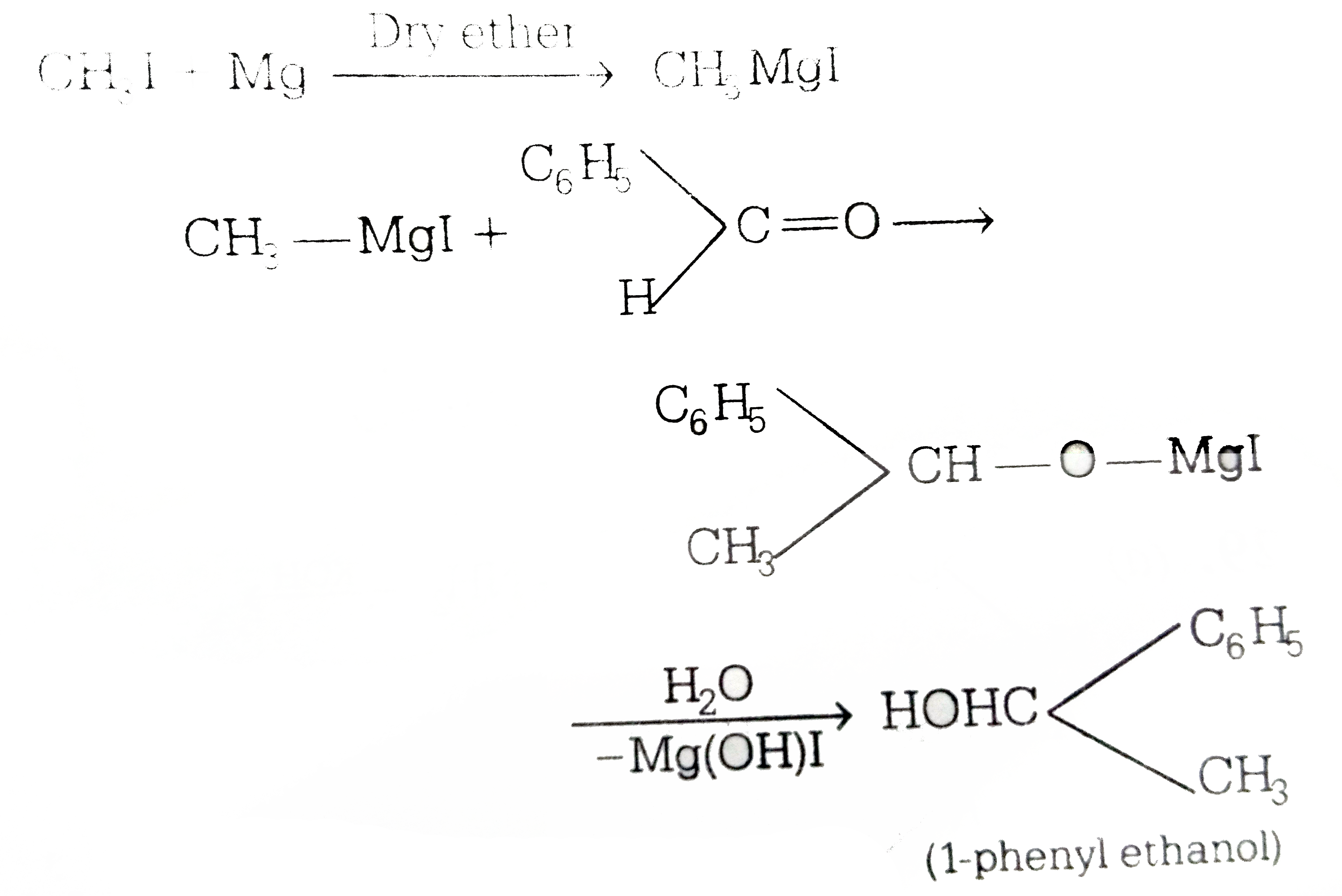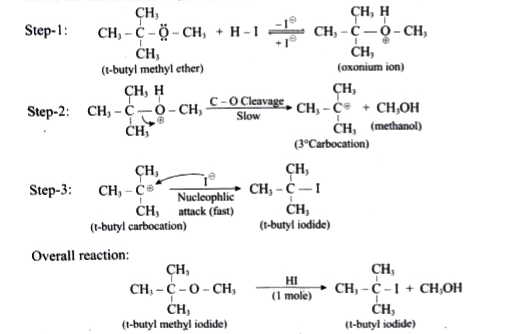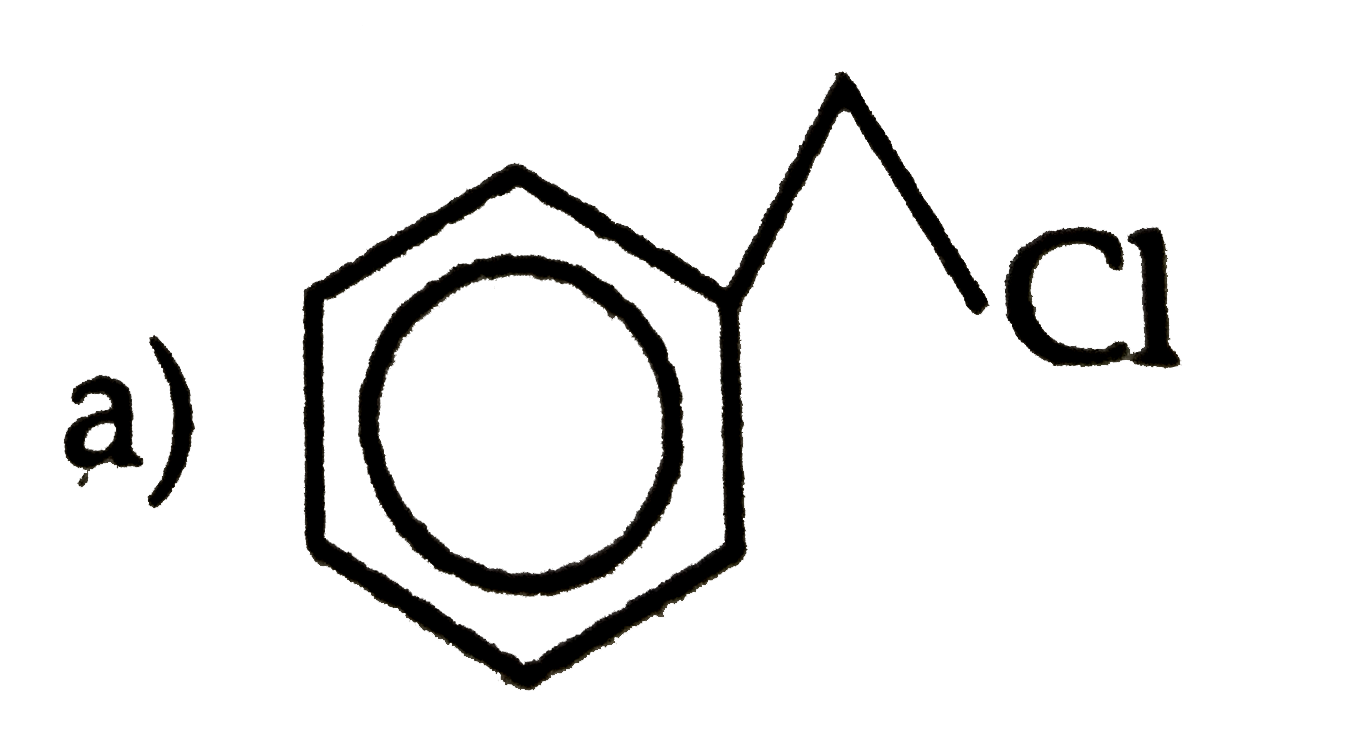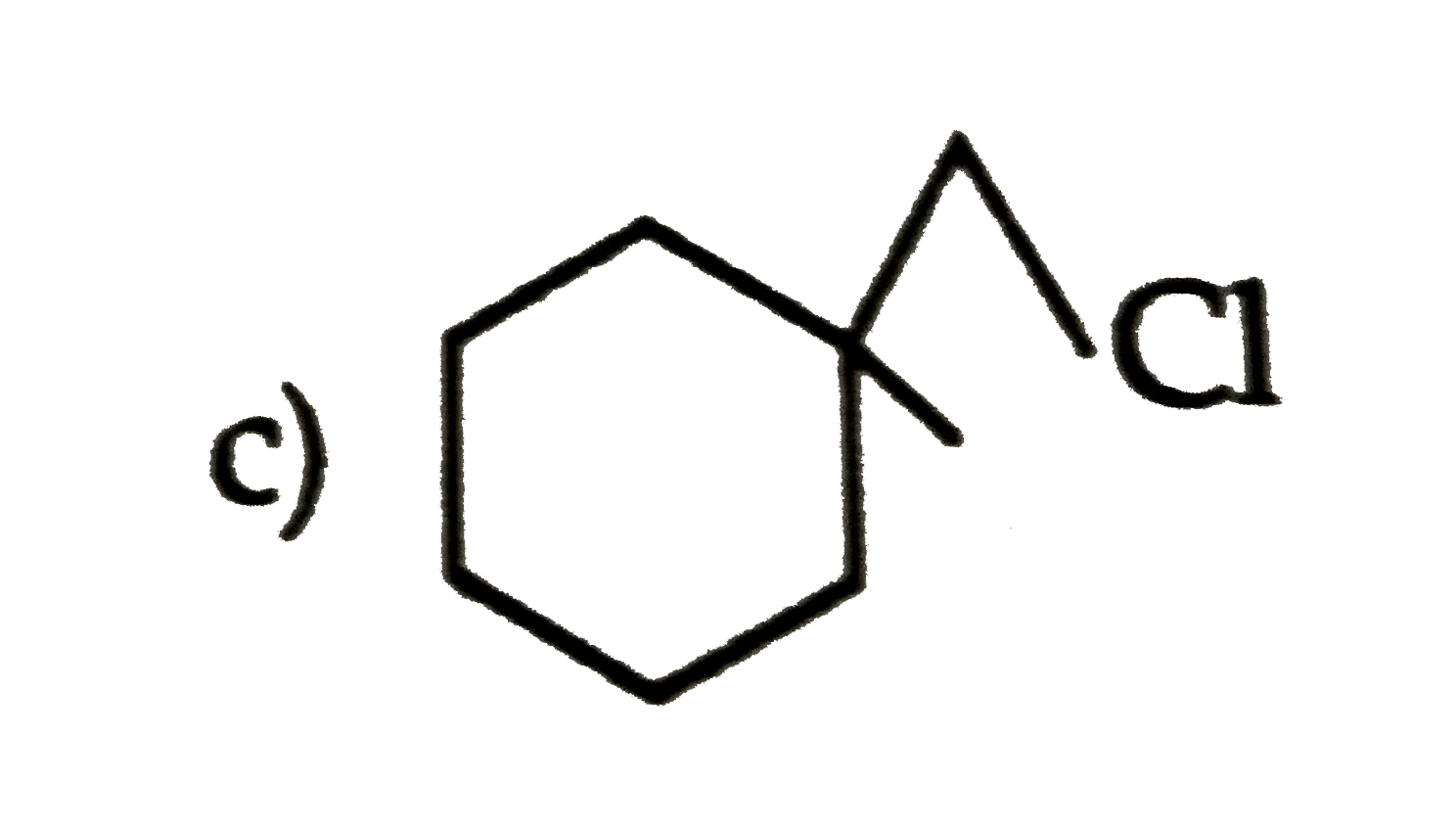Explore topic-wise InterviewSolutions in .
This section includes InterviewSolutions, each offering curated multiple-choice questions to sharpen your knowledge and support exam preparation. Choose a topic below to get started.
| 93201. |
1-phenyl ethanone on oxidation gives |
|
Answer» SALICYLIC acid |
|
| 93202. |
1-phenyl ethanol can be prepared by the reaction of benzaldehyde with |
|
Answer» methyl bromide 
|
|
| 93203. |
1 - phenyl ethan -1-ol is prepared by reaction of benzaldehyde with |
|
Answer» METHYL bromide |
|
| 93204. |
1-phenyl ehtene is reacted with HCl gives |
|
Answer»
|
|
| 93205. |
2-chloro-1-Phenylpropane when treated with alcoholic KOH gives ... as the major product |
|
Answer» 1- Phenylpropene -1 |
|
| 93206. |
1-Phenyl-2-chloropropane when treated with alcoholic potash gives mainy : |
|
Answer» 1-Phenylpropene |
|
| 93207. |
1- phenyl, 2-chloropropane on treating with alc. KOH gives mainly |
|
Answer» 1-phenylpropene |
|
| 93208. |
1-"Pentyne" underset(CH_(3)I, "THE")overset(NaNH_(2))rarr X underset("Lindlar catalyst")overset(H_(2))rarr Y, Y is : |
|
Answer» cis-2-hexene |
|
| 93209. |
1-nitrobutane and 2-methyl-1-nitropropane are belong to …………………………… |
|
Answer» position ISOMERISM |
|
| 93210. |
1-nitro prop-1-ene on acid hydrolysis gwes |
|
Answer» nitroethane and FORMALDEHYDE |
|
| 93211. |
(1)NH_ 4^(o+) overset (KOH) underset(K_2HgI_4)toBlue ppt (2) Ni^( 2+ )overset( dmg )underset( OH^-)toRosy red ppt (3)FeCl _ (3(aq)) overset (NH_4OH) togreen ppt (4)CuSO_(4 (aq)) overset("excess")underset(NH_4OH) to Blue Correct reaction are: |
| Answer» Answer :B | |
| 93212. |
(1) NaCl overset("Conc. "H_(2)SO_(4))toX_((g)) (2) NaBr overset("Conc. "H_(2)SO_(4))toY_((g)) (3) NaF underset(KMnO_(4))overset(H^(+))toZ_((g)) Coloured gas will be:- |
|
Answer» Y |
|
| 93213. |
1) M.P. of Rhombic sulphur is higher than that of monoclinicsulphur 2) Specific gravity of Rhombic sulphur is lower then that of Rhombic sulphur. Then incorrect statement(s) are |
|
Answer» Only 1 Specific gravity of `S_(R )=2.06gr//m` Specific gravity : S of `S_(M)=1.96gr//m S_(R ) gt S_(M)` |
|
| 93214. |
1 mole of which complex produces minimum number of K^(+) ions on dissociation : |
|
Answer» Potassium TRIS(OXALATO)cobaltate(III) (b) `K_(2)[Zn(OH)_(4)]=3` (c ) `K_(2)[PtCl_(4)]=3` d) `K[PT(NH_(3))Cl_(5)]=2` |
|
| 93215. |
1 mole of real gas changes its state from state -A ( bar, 3L, 100K) to state-B (2bar, 5L, 200K) at constant pressure and finally to state-C (3 bar, 10 L, 300K). If DeltaU_(BC) = 110 J and C_(P_(m)) of gas = 3R = 3x 8.3 JK^(-1) mol^(-1) then choose the correct option (s). |
|
Answer» `W_(AB) = 830 J` |
|
| 93216. |
1 mole of N_(2) and 3 moles of H_(2) filled in a one-litre bulb were allowed to react. When the reaction attained equilibrium, two-thirds of N_(2) converted to NH_(3)(N_(2)+3H_(2)hArr2NH_(3)). If a hole is then made in the bulb, the mole ratio of the gases N_(2),H_(2) andNH_(3) effusing out initially would be respectively. |
|
Answer» `1:3:4` |
|
| 93217. |
I mol of NaCl is doped with 10^(-5) mole of SrCl_(2) .The number of cationic vacancies in the crystal lattice will be |
|
Answer» `6.022 xx 10^(18)` As each `Sr^(2+)` ion introduces one cationic vacancy, therefore, number of cationic VACANCIES `= 10^(-5) xx 6.02 xx 10^(23) mol^(-1) = 6.02 xx 10^(18) mol^(-1)` |
|
| 93218. |
1 mole of N_(2) and 2 moles of H_(2) are allowed to react in a 1 dm^(3) vessel. At equilibrium, 0.8 mole of NH_(3) is formed. The concentrationof H_(2) in the vessel is |
|
Answer» 0.6 mole FORMATION of 0.8 mole of `NH_(3)` MEANS that `(3)/(2)xx0.8` mole of `H_(2)` have reacted. HENCE, concentration of `H_(2)=2-(3)/(2)xx0.8` `=2-1.2=0.8" mole"` |
|
| 93219. |
1 mole of ice at 0^(@)C and 4.6 mmHg pressure is converted to water vapour at a constant temperature and pressure. Find DeltaH and DeltaU if the latent heat of fusion of ice is 80 cal/ g and latent heat of vaporisation of liquid water at 0^(@)C is 596 cal/ g and the volume of ice in comparison to that of water (vapour) is neglected. |
|
Answer» Solution :Latent HEAT of fusion of ICE per "mole" `=80xx18=1440 cal`. Latent heat of vaporisation of liquid water per mole `=596xx18` `=10728 cal` . `:.` total heat absorbed by 1 "mole" (18 grams) of ice in being converted to 1 mole of water vapour `=1440+10728=12168"calories"`. Since the conversion took place at a constant pressure, `q_(p)=DeltaH=12168"calories"` Now we have, `DeltaU=DeltaH-PDELTAV=q_(p)-pDeltaV` ....(Eqn. 7) As the volume of ice is to be neglacted, `V_(1)=0` and `V_(2)`= volume of 1 mole of water vapour at `0^(@)C` and `4.6` mmHg pressure `=22400xx(760)/(4.6)=3717000"mL"`. ( Charles.s law) `:.DeltaV=(V_(2)-V_(1))=3717000"mL"` `p=4.6 mm=0.46xx13.6xx981` `=6137"dynes/cm"^(2)` `:.pDeltaV=6137xx3717000"ERGS"` `=(6137xx3717000)/(4.18xx10^(7))"cal"` `=545 cal`. `:.DeltaU=12168-545=11623"calories"("from Eqn". 7)` |
|
| 93220. |
1 mole of Hlis allowed to react with t-butyl methylether. Identify the produet and write down the mechanism of the reaction. |
Answer» SOLUTION :
|
|
| 93221. |
1 mole of liquid A and 2 moles of liquid B make a solution having a total vapour pressure of 38 torr. The vapour pressures of pure A and pure B are 45torr and 36 torr respectively. The described solution |
|
Answer» is an ideal solution `p_(A)=x_(A)xxp_(A)^(@)=(1)/(3)xx"45 torr"="15 torr"` `p_(B)=x_(B)xxp_(B)^(@)=(2)/(3)xx"36 torr = 24 torr"` `therefore"PRESSURE expected by Raoult's law "=15+24` = 39 torr Thus, observed pressure (38 torr) is less than expected value. Hence, the solution shows negative deviation. |
|
| 93222. |
1 mole of HI is allowed to react with t-butyl methylether. Identify the product and write down the mechanism of the reactions. |
|
Answer» Solution :Step-1 : `UNDERSET(("t-butyl METHYL ether"))(CH_(3) - underset(CH_(3))underset(|)overset(CH_(3))overset(|)(C)-underset(..)overset(..)(O) - CH_(3)) + H - I underset(+ I^(oplus))overset(-I^(oplus))(HARR) underset(("oxonium ion"))(CH_(3) - underset(CH_(3))underset(|)overset(CH_(3))overset(|)(C) - underset(oplus)overset(H)overset(|)(O)- CH_(3))` Step-2 :  Overall reaction : `underset(("t-butyl methyl iodide"))(CH_(3) - underset(CH_(3))underset(|)overset(CH_(3))overset(|)(C)-O-CH_(3)) underset(("1 mole"))overset(HI)rarr underset(("t-butyl iodide"))(CH_(3) - underset(CH_(3))underset(|)overset(CH_(3))overset(|)(C) - I) + CH_(3)OH` |
|
| 93223. |
1 mole of helium is expanded from 1 atm to 0.1 atm at 30^(@)C. Assuming ideal behaviour, Delta S for the process is : |
|
Answer» `38.3 JK^(-1)` |
|
| 93224. |
1 mole of H_(2)SO_(4) will exactly neutralise: |
|
Answer» 2 mole of ammonia |
|
| 93225. |
1 mole of H_(2) and 2 moles of I_(2) are taken initially in 2 litre vessel. The number of moles of H_(2) at equlibrium is 0.2. Then the number of moles of I_(2) and HI at equliberium are |
|
Answer» `1.2,1.6` `H_(2)+I_(2)hArr2HI` `{:("Inital no.",1,2,0),("of MOLE",,,),("No of moles"0.,2,,(-20.8)2xx0.8),("at equlibrium",,=1.2,=1.6):}` |
|
| 93226. |
1 mole of gas occupying 3 litre volume is expanded against a constant external pressure of 1 atm to a volume of 15 litre . The work done by the system is: |
|
Answer» `1.215xX10^3J` |
|
| 93227. |
1 mole of electrons is passed through three electrolytic cells in series , first containing silver ions, the second zinc ions and third ferric ions, assuming that the only cathode reaction in each cell reduces the ions to the metal , the number of moles of each metal deposited will be |
|
Answer» Ag(0.3 MOL),Zn(1MOL),Fe(1 mol) |
|
| 93228. |
1 mole of electrons is passed through three electrolytic cells in series , first containing silver ions , the second zinc ions and third ferric ions , assming that the only cathodic reaction in each cell reduces the ions to the metal , the number of moles of each metal deposited will be : |
|
Answer» Ag(0.3 mol.),Zn(1 mol.),Fe(1mol.) |
|
| 93229. |
1 mole of CO_(2) gas at 300 K is expanded under reversible adiabatic condition such that its volume becomes 27 time. (a) What is the final temperature (b) What is work done Given gamma=1.33andC_(v)=25.08Jmol^(-1)K^(-1)" for "CO_(2) |
| Answer» SOLUTION :`T_(2)=100K,w=5.016KJ` | |
| 93230. |
1 mole of conc. HCl requires X moles of dilute NaOH for neutralisation and 1 mole of concentrate H_(2)SO_(4) requires Y moles of small dilute NaOH then which of the following reaction is true |
| Answer» Solution :`X=(1)/(2)Y`. | |
| 93231. |
1 mole of CO_(2) gas at 300 K is expanded under adiabatic conditions such that its volume becomes 27 times . What is work done ?(gamma = 1.33 and C_(v) = 6 cal mol^(-1) for CO_(2)) |
|
Answer» 900 cal `T_(2)=300xx1/3 =100K` thus `T_(2) LT T_(1)` HENCE cooling takes place due to expansion under adiabatic condition. `W=DeltaE=-C_(v)(T_(2)-T_(1))` `[DeltaE=(-)` ve , expansion] `-6(100-300)=1200 cal` |
|
| 93232. |
1 Mole of CO_(2) gas at 300 K expanded under that reversible adiabtic condition such that its volume becomes 27 times. The magnitude of work (in kJ/mol) is : ("Given "y=1.33 and C_(v)="25.10 J mol"^(-1)K^(-1)" for "CO_(2)) report your answer by rounding it up to nearest whole number |
|
Answer» |
|
| 93233. |
1 Moleof buckminsterfullerenecontains_______ Molesof carbon. |
| Answer» ANSWER :D | |
| 93234. |
1 mole of an ideal gas, initially at 400 K and 10 atm is first expanded at constant pressure till the volume is doubled.Then the gas is made to undergo an isochoric process, in which its temperature is found to decreases.In the last final step, gas was compressed reversibly and adiabatically to initial state.Determine the net work involved in this cyclic process (in terms of R).Given, C_v for gas =1.5 R, (4)^(-1//3)=0.63 If |W|=2Rxxz, report your answer as z. |
|
Answer» <P>  `{:(At1:p=10"atm",T=400K,V=V_1),(AT2:p=10"atm",T=800K,V=V_2=2V_1),(AT3:p=?,T=T_3,V=V_3=V_2=2V_1):}` Therefore, `W_12=-pDeltaV=-nRT=-400 R` `W_23=0 " " [because DeltaV=0]` Between 3 and 1 ,`TV^(gamma-1)` =constant `T_3(2V_1)^(gamma-1)=400(V_1)^(gamma-1)` `implies T_3=400(1/2)^(2//3)=252 K` `implies W_31=DeltaE_31=nCV(T_1-T_3)=3/2R(400-252)=222 R` `implies W_(12-31)=W_(12)+W_23+W_31= -178 R` |
|
| 93235. |
1 mole of an ideal gas at 25^@C is subjected to expand reversibly ten times of its intial volume. The change in entropy of expansion is: |
|
Answer» `19.15 JK^-1 mol^-1` |
|
| 93236. |
1 mole of an ideal gas at 300 K in thermal contact with surroundings expands isothermally from 1.0 L to 2.0 L against a constant pressure of 3.0 atm. In this process, the change in entropy of surroundings (DeltaS_("sur")) in J K^(-1) is (1 L atm=101.3 J) |
|
Answer» 5.763 `:. Q=-w=-PDeltaV=-3(2-1)=-3L "ATM"=-303.9` J Now apply `DeltaS=(q)/(T)` |
|
| 93237. |
1 mole of anideal gas at25^(@) C is subjected to expand reversibly and adiabaticallyto ten times of its initialvolume. Calculate the change in entropy during expansion (in J K^(-1) mol^(-1)) |
|
Answer» `19.15` For ADIABATIC process `(Q-0)` `DeltaE = W "" IMPLIES""nC_(v) ln(T_(2))/(T_(1)) =-NR ln (V_(2))/(V_(1)) "" therefore""DeltaS=0` |
|
| 93238. |
1 mole of ammonia contains : |
|
Answer» `6.02 xx 10^(23)` atoms of H |
|
| 93239. |
1 mole of Al is deposited by X coulomb of electricity passing through molten aluminium nitrate solution. The number of moles of silver deosited by X coulomb of electricity from silver nitrate solution is: |
|
Answer» 3 MOLES |
|
| 93240. |
1 mole of Al is deposited by X coulomb of electricity passing through aluminium nitrate solution . The number of mole of silver deposited by X coulomb of electricity from silver nitrate solution is |
|
Answer» 3 `[ because (W)/(E)` (for Ag) = `(W)/(E)` (for Al)] |
|
| 93241. |
1 mole of a non-voltile non-dissociative solid solute is dissolved in 200 moles of water. The solution is taken to a temperature T_(K) (lower than freezing point of solution) to cause ice formation. After removal of ice the remaining solution is taken to 373 K where vapour pressure is observed is to be 740 mm of Hg. Identify the correct options : Given data : K_(f) (H_(2)O) = 2K kg mol^(-1) and normal boiling point of H_(2)O = 373 K. |
|
Answer» `163` moles of ice will be formed. |
|
| 93242. |
1 mole of A is allowed to decompose in a 1-litre container. 0.4 mole of B was produced at equilibrium. The equilibrium constant K_(c) for the equilibrium A(g)hArr2B(g)+C(g), is |
|
Answer» 0.04 |
|
| 93243. |
1 mole N_(2)(g) undergoes followingcyclic process : Which option(s) is/are correct ? [Use: R = 2 Cal//K-"mole", ln 2 = 0.7] |
|
Answer» `W_("OVERALL") = -180 cal` |
|
| 93244. |
1 mole of ._(7)^(14)N^(3-) ions contains: |
|
Answer» `7xx6.023xx10^(23)` ELECTRONS |
|
| 93245. |
1 mole each of N_2(g) and O_2(g) are introduced in a 1L evacuated vessel at 523 K and equilibrium N_2(g)+O_(2)ghArr2NO(g) is established.The concentration of NO(g) at equilibrium : |
|
Answer» Changes on changing volume of vessel (A)For changing pressure volume has to be changed, though NUMBER of moles of NO(g) do not get changed but its concentration will get changed. (B)Temperature change will change `K_P` and hence concentration. ( C)Volume change will change concentration, not the number of moles. (D)CATALYST does not change equilibrium concentrations. |
|
| 93246. |
1 mole each of A and D is intoduced in 1 litre container. Simultaneously the following two equilibria are established: A hArrB+C K_(C)=10^(6)M^(2) B+DhArrA K_(C)=10^(-6)M^(-1) The equilibrium concentration of A will be |
|
Answer» `10^(-3)M` `K_(C)=10^(6)` `{:("ASSUME",l-I,I),("at EQM x",1-x,1-x):}` `B+DhArr A`….(ii) `K_(c)=10^(-6)` at eqm `1-x10xx` by i+ii `DhArrCK_(C)=10^(6)xx10^(-6)=1` at eqm 1-x 1-x For (i) `k_(c)=10^(6)=(IxxI)/(x)rArrx=10^(-6)` |
|
| 93247. |
1 mole benzene (P_("benzene"^(@)=42"min")) will have |
|
Answer» TOTAL VAPOURPRESSURE 38 mm |
|
| 93248. |
1 Molar solution contains |
|
Answer» 1000g of solute |
|
| 93249. |
1 mol of H_(2)O(l) is formed when 1 mol of H^(+) ions and 1 mol of OH^(-) ions react together is aqueous solution. Does this reaction represent the formation reaction of water? |
| Answer» Solution :No, because `H_(2)O(l)` is not FORMED from its constituent ELEMENTS. | |
| 93250. |
1 mol of ferric oxalate is oxidised by x mol of MnO_(4)^(-) and also 1 mol of ferrous oxalate is oxidised By y mol of MnO_(4)^(-) in acidic medium. The ratio (x/y) is: |
|
Answer» `2:1` |
|



